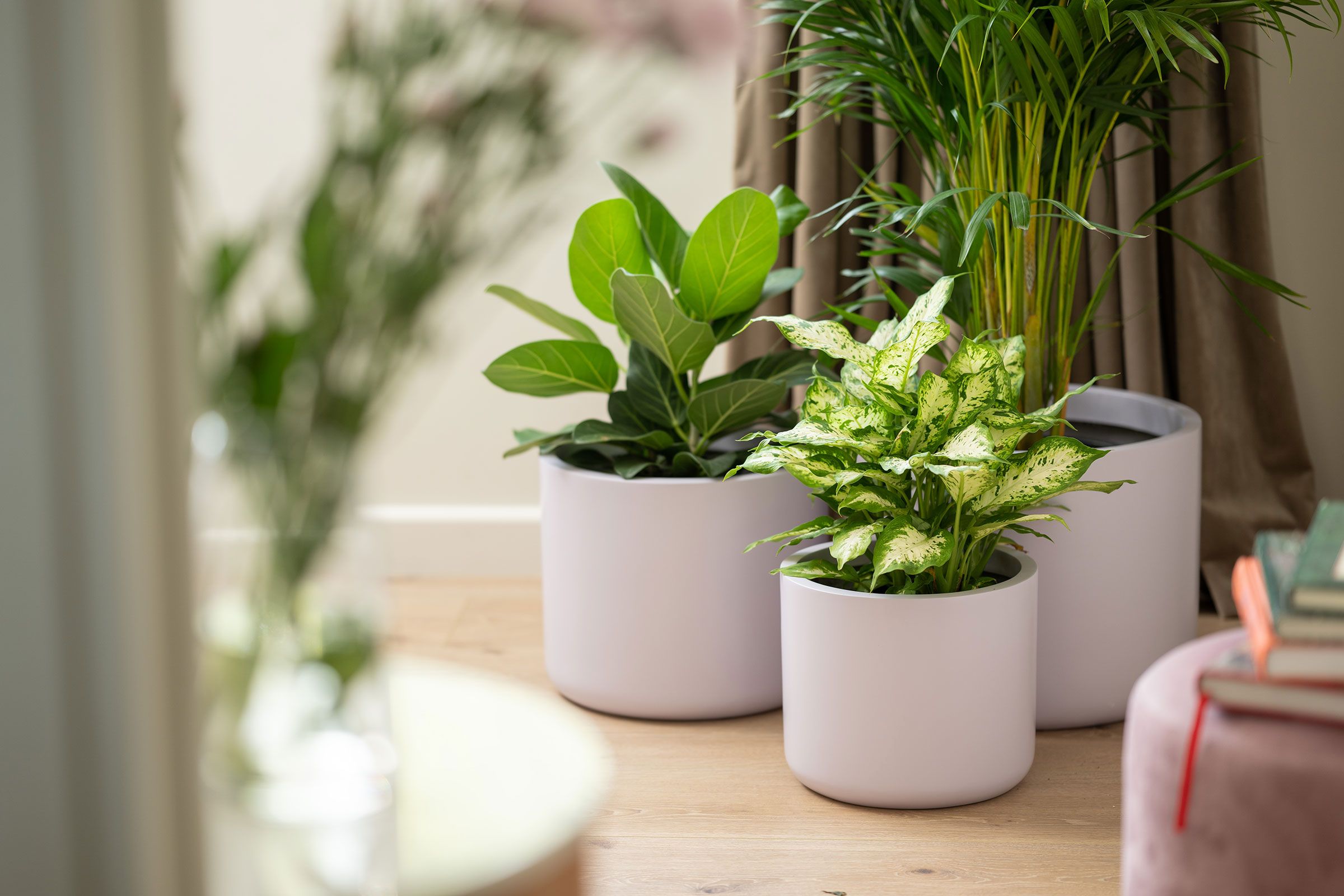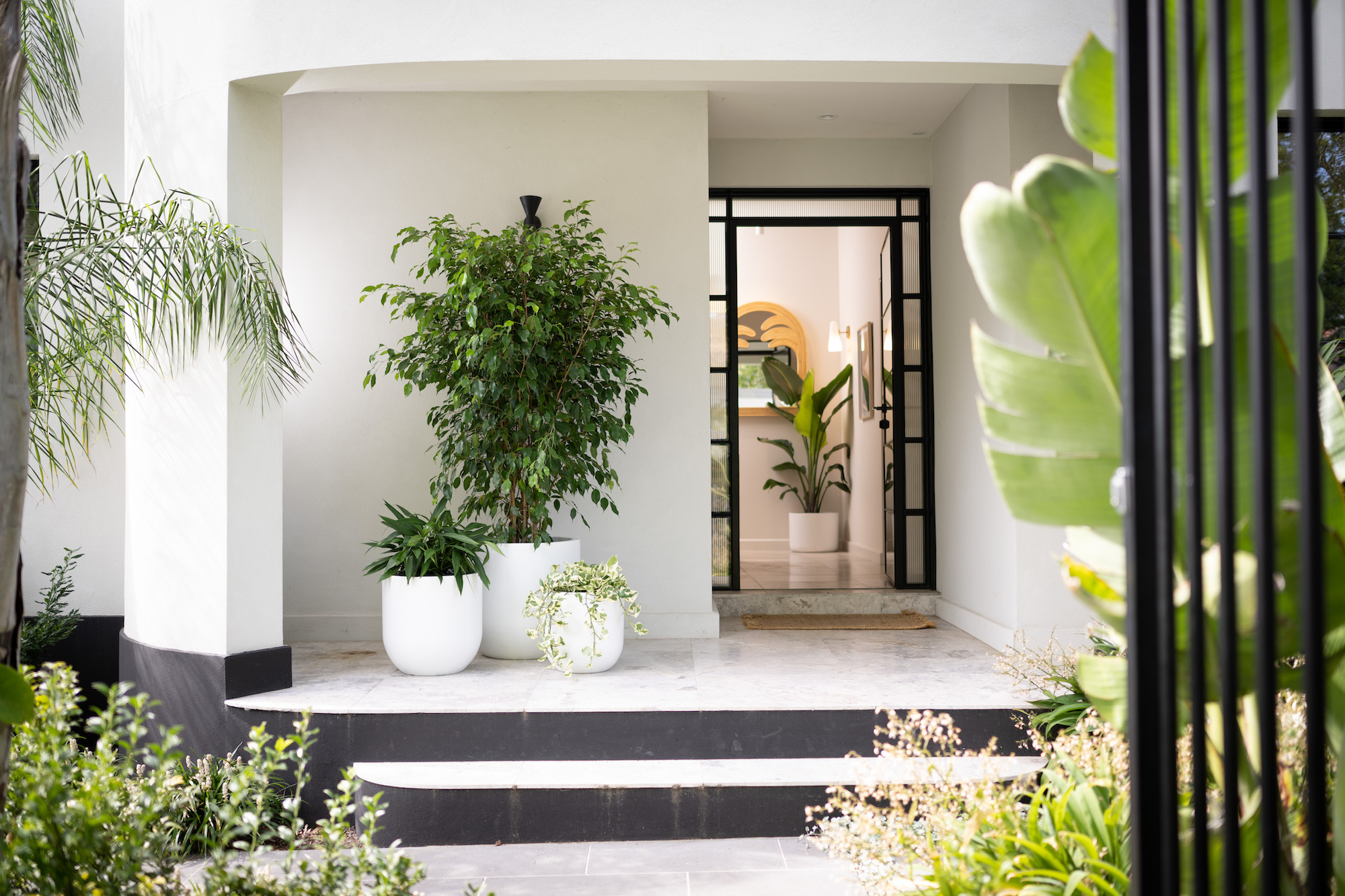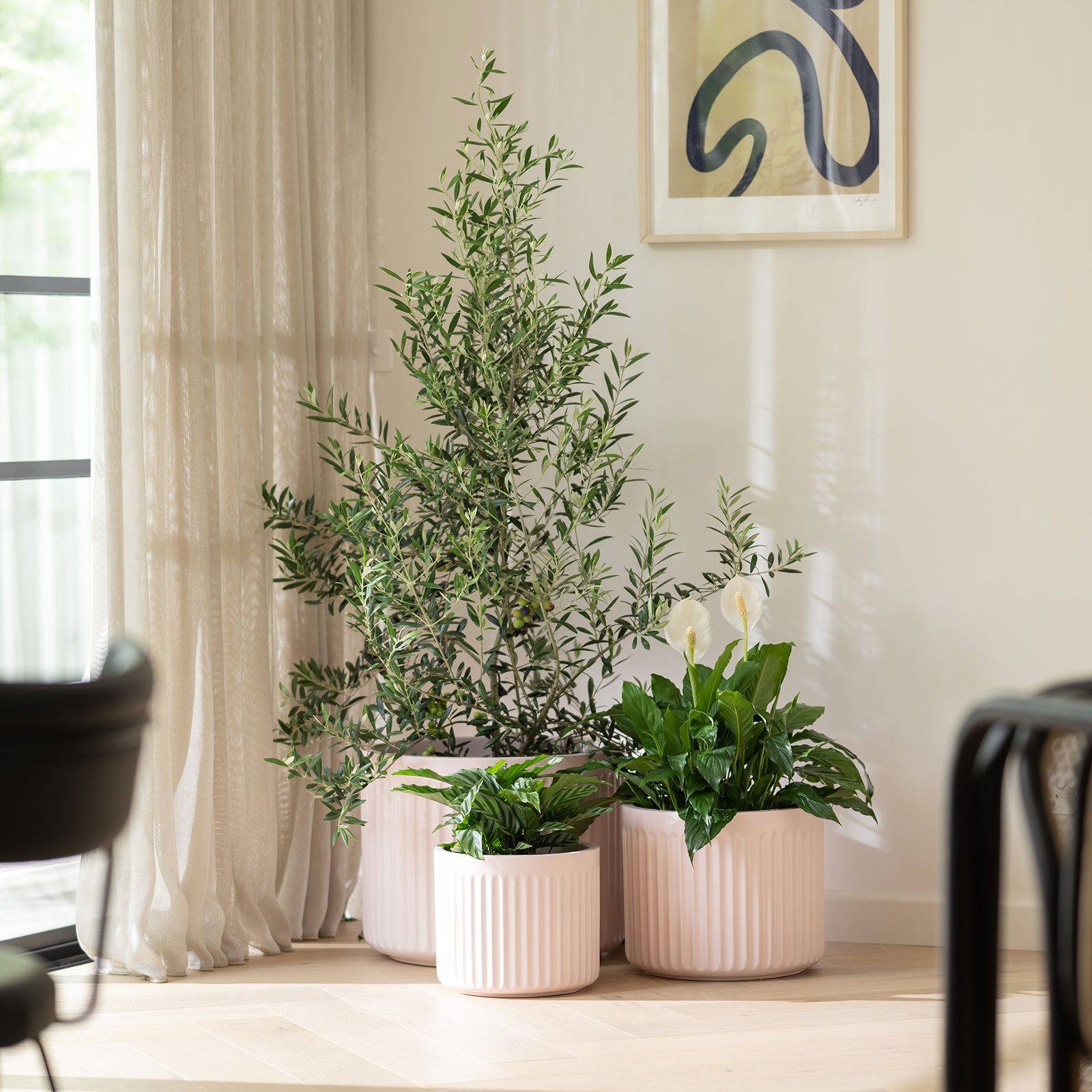Plants paired with the right pot can elevate an interior and outdoor space, whilst supporting overall plant health. Take into consideration the pot’s colour and its relationship with the surrounding space to effortlessly create harmony in any indoor and outdoor space. Being intentional about your choices and grouping plants according to complimentary colour palettes can have a huge impact on the atmosphere of a space.
Best Colours for Plant Pots
Understanding the basics of colour theory allows for intentional decisions regarding how a colour will affect your space. The three primary colours are red, blue and yellow. Secondary colours are formed by mixing these colours together.
Bold Colours
Opt for bold primary and secondary hues in brightly coloured plant pots when you want to create specific focal points. In contrast, use neutral tones to blend your pot and accentuate the plant from its surroundings.
Darker Tones
Darker colours have a ‘heavier’ feel, and black designer plant pots can create bold statements. They are best in large spaces as they can make a room feel smaller.
Lighter Colours
White and pastels will help your room appear bigger and are ideal for small, compact rooms when you want to create the illusion of more space. These colours will also contrast with darker design elements to create key focal points.
Lighting
Lighting plays an important role in how colour interacts with the environment. Warm tones used in rooms with plenty of natural light will blend into the space creating a more cohesive look. In contrast, their use in darker rooms may transform potted plants into exciting accent pieces.
Colour and Plant Health
The intensity of your colours may also affect the health of your potted plant. Darker pots will absorb more heat and increase the soil temperature. This may lead to root damage to heat-sensitive plants that benefit from lighter pots. Darker pots should therefore ideally be restricted to shady areas.
Creating Colour Palettes
When considering combinations of colours, it may be a good idea to use a colour wheel to help understand how combinations will feel in your space. Colours next to each other on the colour wheel create a visually calming display. For example, blue and teal pots paired with leafy green foliage can bring a calming feel to your space,
Combinations of two colours from opposite sides of the wheel are considered complementary. Choosing a pot complementary to the room’s background colour may create a bold statement, as complementary colours invoke a sense of contrast.
Grouping more than three colourful indoor plant pots invokes a feeling of excitement and intrigue. In contrast, monochromatic groupings can effortlessly create harmony. For example, a green pot paired with a leafy indoor plant will act to naturally extend the plant’s form.

Find the Perfect Pot
By being considerate of colour choices regarding your plants, you can create stunning displays that elevate the space around them. You can set the mood of a space by being deliberate about your pot’s colour and the combinations it creates with its surrounding background, plants and lighting. Picking up a plant pot set is also an easy way to promote unity of style.
Browse Simply Good Pots’ elegant collection to begin transforming your space. If you have any questions, you can reach our team via the online contact form or by calling us on 03 8582 3064.

